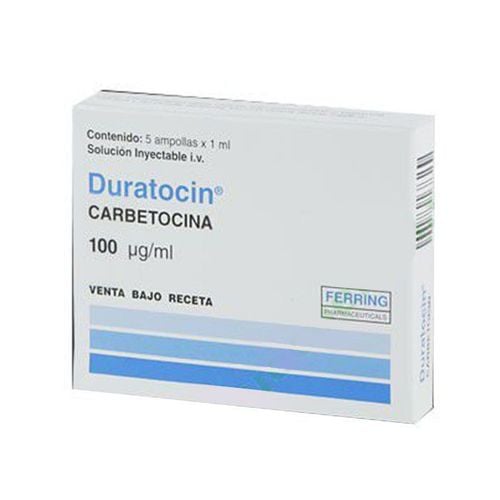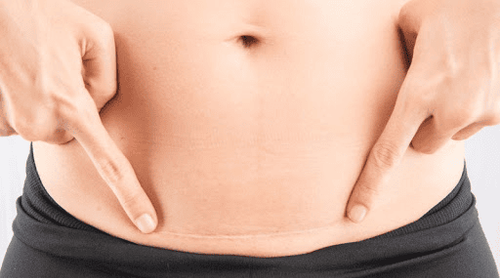This is an automatically translated article.
The article was professionally consulted by Specialist Doctor II Le Minh Viet - Anesthesiologist - General Surgery Department - Vinmec Ha Long International General Hospital.The method of endotracheal anesthesia for cesarean section is indicated for women who have a normal cesarean section but have a high risk of complications if placenta previa, placenta previa or symptoms of preeclampsia are present.
1. Advantages of endotracheal anesthesia for cesarean section
Anesthesia is a method to help the patient lie still, worry-free, pain-free, and ensure the patient's safety during the surgery (because pain, excessive fear can lead to the stopping reflex). heart, causing death). Therefore, anesthesia always goes hand in hand with surgery.Endotracheal anesthesia is a general anesthetic technique, performed by placing a plastic or rubber catheter that is passed from the mouth into the patient's trachea. The purpose of endotracheal anesthesia is to control the patient's breathing during surgery and postoperative recovery. This anesthetic technique is being widely applied in many different surgeries, including cesarean section in healthy pregnant women.

2. Procedure for endotracheal anesthesia for cesarean section in healthy pregnant women
2.1 Designation
Anesthesia for cesarean section in patients:There are contraindications to spinal anesthesia Emergency surgery in obstetrics in cases of fetal distress, placenta accreta, placental abruption, eclampsia or severe preeclampsia, ...
2.2 Contraindications
Endotracheal anesthesia is contraindicated in patients who are allergic to anesthetics.2.3 Preparation before anesthesia
Implementation personnel: Anesthesiologist and an assistant anesthesiologist; Technical facilities: Anesthesia machine, tracheal lamp, suction machine, endotracheal tube of sizes 6 - 7.5, laryngeal mask of all sizes (in case of difficult prognosis for intubation); endotracheal tube, canuyn Mayo; 10ml syringe for endotracheal tube insertion balloon; 5 - 10 - 20ml syringe for injecting anesthetics, morphine and muscle relaxants; Medications: Some drugs use anesthesia; analgesic ; Transfusion of all kinds; drugs used in emergency resuscitation if necessary; The patient: The technique is explained to the patient to coordinate with the doctor in the induction and recovery of anesthesia; should fast 6 hours before surgery; Medical records: Sign a written commitment to surgery, all kinds of basic test papers on blood coagulation, blood count, electrocardiogram, liver function, kidney function, chest X-ray.
2.4 Conducting endotracheal anesthesia
Check the patient's medical record, ensure that all necessary documents are available, including a commitment to surgery, minutes of surgical consultation, basic tests, ... Examination of the patient: Cardiopulmonary re-examination, prognosis Risk of difficult intubation, give the patient 2 effervescent tablets of Ranitidine 300mg before induction of anesthesia Insert a peripheral intravenous infusion of size 18 - 20G, start infusion of Ringer Lactat or Ringerfundin solution Set continuous monitoring to return pulse indicators, blood pressure, respiratory rate, capillary oxygen saturation, end-expiratory CO2 pressure,... It is necessary to set the parameters of the anesthesia machine to suit each patient. left side about 5 - 10° Give the pregnant woman oxygen to increase the oxygen reserve before induction of anesthesia Antiseptic, spread the surgery, the surgical team is ready to perform the induction of anesthesia Quick induction of anesthesia: Press the nucleus pulposus If the patient has a full stomach. Inject Diprivan at a dose of 2.5 mg/kg. When the patient has lost consciousness, administer a short muscle relaxant Succinylcholine at a dose of 1 mg/kg. In case of contraindication to short muscle relaxation, other drugs can be used with appropriate dosage. Intubate after 1 minute, inflate the balloon to insert the endotracheal tube, determine the correct position, then stop pressing the cricoid cartilage. endotracheal tube, put patient on mechanical ventilation, maintain anesthesia with inhalation anesthetic Isoflurane, Sevoflurane or Diprivan with appropriate dosage Insert nasogastric tube Antiseptic and surgery Closely monitor patient's blood pressure parameters , pulse, capillary oxygen saturation, especially end-expiratory CO2 and ventilator parameters (frequency, airway pressure),... Keep systolic blood pressure above 80% of baseline by infusion, ephedrine. If the patient has a bradycardia that has decreased by 20% compared to the pre-anesthesia pulse rate, intravenous atropine 0.5mg should be given, possibly a booster injection if there is no improvement up to a maximum dose of 3mg After neonatal cord clamping, reduce the dose. anesthesia, use pain relievers fentanyl, sufentanil with surgical doses Prophylactic antibiotic injection (can be given before umbilical cord clamping) For patients using uterine contractions: Intravenous oxytocin infusion (no intravenous injection because it can cause hypotension) after umbilical cord pairing Treatment for postoperative analgesia Closely monitor the patient's parameters of blood pressure, pulse, capillary oxygen saturation, especially CO2 at the end of breathing out Perform bilateral squamous sphincter anesthesia to relieve postoperative pain before extubation. Let the patient practice breathing through the endotracheal tube, aspirate gastric juice before extubation, perform extubation. trachea when the patient is awake, breathing well, can function on command, blood pressure, pulse is stable and the effects of muscle relaxants have worn off Monitor in recovery room: Give The patient breathes oxygen through the nose with a flow of 3 - 5 liters / min. uterine contractions.2.5 Complications and management after cesarean section endotracheal anesthesia
Hemodynamic disorders : Hypertension or hypotension, arrhythmia (tachycardia, bradycardia or arrhythmia): Treatment depends on cause and symptoms
Vinmec International General Hospital system with its comprehensive level of expertise, facilities and professional service quality has very successfully performed surgical endotracheal anesthesia in caesarean sections. pregnant.
Endotracheal anesthesia in cesarean section at Vinmec has many advantages:
High success rate ≥ 95%, complication rate ≤ 5%, ensuring safety of cesarean section; contribute to the success of cesarean section with pathology. Modern operating room: Negative pressure operating room ensures high sterility, modern anesthesia machine system, patient monitoring machine in surgery Owns anesthesiologists with extensive experience in Obstetric Anesthesia. Specialist II Le Minh Viet has more than 30 years of experience in the field of Anesthesia - Resuscitation, including more than 2 years as a Medical expert in Yemen and former Head of Anesthesia and Resuscitation Department - Thanh Hoa Hospital. Nhan, Hanoi. Currently, Dr. Le Minh Viet is an anesthesiologist, Anesthesia Unit - operating room, Vinmec Ha Long International Hospital.
Please dial HOTLINE for more information or register for an appointment HERE. Download MyVinmec app to make appointments faster and to manage your bookings easily.













